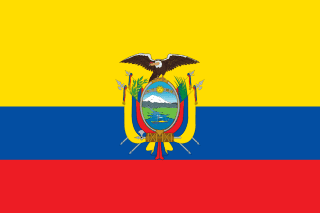Ecuador Travel Guide: Essential Tips
Explore Ecuador: From Quito to the Galápagos Islands

The 15 Most Searched Questions About Ecuador
1. What is the capital of Ecuador?
The capital of Ecuador is Quito, known for its well-preserved colonial center and high altitude in the Andes.
2. Do I need a visa to visit Ecuador?
Many nationalities can enter visa-free for up to 90 days. More details in our Documents tab.
3. What currency does Ecuador use?
Ecuador uses the US Dollar (USD). More details in our Currency tab.
4. Is Ecuador safe for tourists?
Ecuador is generally safe in tourist areas, but caution is advised in certain regions. More details in our Safety tab.
5. What language is spoken in Ecuador?
Spanish is the official language, with Indigenous languages like Quechua also spoken. English is common in tourist areas like the Galápagos.
6. What is Ecuador known for?
Ecuador is known for the Galápagos Islands, the Amazon rainforest, and Quito’s historic center. More details in our Top Attractions tab.
7. What is the best time to visit Ecuador?
The dry season (June to September) is ideal for visiting Quito and the Andes; the Galápagos is best from December to May for calmer seas.
8. Is it expensive to visit Ecuador?
Ecuador is budget-friendly—a daily budget of $40-$80 covers most expenses, though Galápagos trips can be pricier.
9. Can I drink tap water in Ecuador?
Tap water is not generally safe—bottled water costs $0.50-$1 per liter.
10. What are some must-visit places in Ecuador?
Must-visits include Quito, the Galápagos Islands, and Baños. More details in our Top Attractions tab.
11. How is the climate in Ecuador?
Quito is cool (10-20°C), the Amazon is humid (25-35°C), and the Galápagos has a mix of dry and wet seasons (20-30°C).
12. Are there festivals in Ecuador?
Yes, the Inti Raymi festival in June celebrates the sun god with rituals in the Andes, especially in Otavalo.
13. What souvenirs should I buy in Ecuador?
Popular souvenirs include Panama hats (which originated in Ecuador), alpaca textiles, and cacao products.
14. How do I get around in Ecuador?
Buses, domestic flights, and taxis are common. A bus from Quito to Guayaquil costs $10-$15 and takes 8 hours.
15. What traditional dishes should I try in Ecuador?
Try ceviche, llapingachos, and encebollado. More details in our Local Cuisine tab.
About Ecuador
Ecuador, located on the equator in northwestern South America, spans 283,560 square kilometers, bordered by the Pacific Ocean, Colombia, and Peru. Quito, the capital, sits at 2,850 meters in the Andes and is home to 2 million people, part of Ecuador’s total population of 18 million (2023 estimate), with ethnic groups including mestizos, Indigenous peoples like the Quechua, and Afro-Ecuadorians. Spanish is the official language, alongside Indigenous languages like Quechua, and English is common in tourist areas like the Galápagos Islands. Many nationalities can enter visa-free for up to 90 days. In 2023, Ecuador welcomed over 1.5 million tourists, drawn by the biodiversity of the Galápagos Islands, the Amazon rainforest, and Quito’s UNESCO-listed historic center. The economy relies on oil, agriculture (bananas, cacao), and tourism, with the Galápagos contributing significantly to tourism revenue. The climate varies: Quito is cool (10-20°C), the Amazon is humid (25-35°C), and the Galápagos has a mix of dry and wet seasons (20-30°C), with the dry season from June to September. Budget travelers can manage on $40-$80 per day, with a local meal costing $3-$7 and a coffee $1-$2; Galápagos tours, however, can cost $1,000-$3,000 for a 5-day trip. Public transport includes buses ($0.25-$15 for long routes) and domestic flights ($50-$150 for short routes like Quito to Guayaquil), while taxis in Quito start at $2 per ride. Cultural events like Inti Raymi (June) celebrate Indigenous traditions in the Andes, particularly in Otavalo. Ecuador’s history includes pre-Incan cultures like the Valdivia, Incan rule in the 15th century, Spanish colonization in the 16th century, and independence in 1830, with a rich cultural heritage reflected in sites like the Mitad del Mundo monument and the Ingapirca ruins. Known for its ceviche, Panama hats (which originated in Ecuador), and the Galápagos’ unique wildlife, Ecuador offers a blend of natural wonders, cultural depth, and adventure, making it a top destination for travelers.
Visa & Passport for Ecuador: Entry Requirements for Travelers
- Passport Requirements: Your passport must be valid for at least 6 months beyond your entry date into Ecuador and have at least one blank page for stamps. Children need their own passports—they cannot travel on a parent’s passport.
- Visa Requirements: Citizens of the US, Canada, EU, and many other countries can enter visa-free for up to 90 days for tourism. Overstaying can result in fines of $200-$500, payable at Migración Ecuador offices.
- Other Requirements: A yellow fever vaccination is required if arriving from certain countries (e.g., Brazil) or visiting the Amazon—carry your vaccination certificate. Travel insurance covering medical emergencies and outdoor activities (e.g., hiking in the Andes) is advised.
Driving in Ecuador: Road Rules & Tips for Tourists
- Driver’s License: Your national driver’s license is valid for 30 days—an International Driving Permit (IDP) is recommended. Car rentals in Quito start at $25 per day; 4x4s are advised for rural areas like the Amazon at $40 per day.
- Road Rules: Drive on the right side of the road. Speed limits are 50 km/h in urban areas and 90 km/h on highways. Seat belts are mandatory, and the legal blood alcohol limit is 0.03%—fines for violations start at $150.
- Road Conditions: Major highways like the Quito-Guayaquil route are paved, but rural roads can be unpaved and challenging, especially in the Amazon. Avoid driving at night due to poor lighting and road hazards.
- Transport: Buses from Quito to Guayaquil cost $10-$15 and take 8 hours. Domestic flights to the Galápagos cost $200-$400 and take 2.5 hours from Quito.
- Emergency Number: Dial 911 for police or medical emergencies.
Currency in Ecuador: Using the US Dollar for Your Trip
- US Dollar (USD): The official currency since 2000. Coins include Ecuadorian centavos (which are interchangeable with US cents) alongside US dollar coins and bills.
- Currency Exchange: Since Ecuador uses the US Dollar, no exchange is needed for US travelers. ATMs are widely available, with withdrawal fees of $2-$5 for international cards.
- Payment Methods: Cards are accepted in cities; cash is needed in rural areas and the Galápagos. Mobile payments like Google Pay are limited.
- Costs: A local meal costs $3-$7, a coffee $1-$2, and a souvenir like a Panama hat costs $15-$40.
Legal Guide for Ecuador: Laws Travelers Should Know
- Local Laws: Drug possession is illegal—penalties include up to 13 years in prison. Public intoxication can lead to fines of $50-$100.
- Cultural Sensitivities: Respect Indigenous traditions in the Andes—avoid mocking local customs. More details in the Culture & Etiquette tab.
- Photography Restrictions: Photography in Quito is unrestricted for personal use, but drones require permits—fines for violations start at $200.
- Public Behavior: Public nudity is illegal—fines start at $300. Littering incurs fines of $50-$100.
- Customs Rules: You can bring up to 3 liters of alcohol and 200 cigarettes duty-free. Declare cash over $10,000.
- Emergency Contact: Dial 911 for police or medical emergencies.
Travel Safety in Ecuador: Staying Safe During Your Trip
- Crime: Ecuador is generally safe in tourist areas like Quito, but petty theft can occur in crowded markets—keep valuables secure. Avoid border areas near Colombia due to security risks.
- Road Safety: Major roads are safe, but rural routes in the Amazon can be hazardous—use GPS and avoid night driving. Public transport in Quito, like the Ecovía bus, is reliable at $0.25 per ride.
- Health Risks: Tap water is not safe—use bottled water. Mosquito-borne diseases like dengue are a risk in the Amazon—use repellent and long sleeves.
- Natural Hazards: Ecuador is prone to earthquakes in the Andes—follow safety protocols. The Amazon can experience flooding during the rainy season (December to May)—check weather forecasts.
- Outdoor Safety: In the Galápagos, stick to guided tours—marine life and currents can be dangerous. Carry a first-aid kit for remote areas like Imbabura Volcano.
- Medical Facilities: Hospital Metropolitano in Quito is recommended for emergencies. Pharmacies are widespread—look for the “Farmacia” sign.
- Emergency Contacts: Dial 911 for police or medical emergencies. The US Embassy in Quito can be reached at +593 2 398 5000.
Culture & Etiquette in Ecuador: What to Know
- Greetings: A handshake or “Hola” is common; friends may hug or kiss on the cheek. Use “Señor” or “Señora” with elders.
- Dining Customs: Tipping is not mandatory—10% is appreciated in restaurants. Meals are social—expect lunches to be the main meal, often lasting 1-2 hours.
- Community Respect: Respect Indigenous traditions in the Andes—don’t mock local culture. Dress modestly when visiting churches in Quito.
- Festivals: Inti Raymi in June features traditional ceremonies in Otavalo. The Mama Negra festival in Latacunga (September) celebrates Indigenous and African heritage with parades.
- Language Tips: Ecuadorians are friendly—learning “Gracias” (thank you) or “Por favor” (please) is appreciated. Spanish varies by region—Quito’s accent is clearer, while coastal areas have a faster rhythm.
- Social Practices: Punctuality is valued in business settings but more relaxed socially. Bargaining is common in markets like Otavalo—be polite but firm.
Local Cuisine in Ecuador: Dishes & Drinks to Try
- Ceviche: Raw seafood marinated in lime juice, often served with popcorn—$5-$10 per serving.
- Llapingachos: Potato cakes stuffed with cheese, often paired with peanut sauce—$3-$6 per plate.
- Encebollado: A fish soup with onions and yuca, popular on the coast—$4-$8 per bowl.
- Chicha: A traditional fermented corn drink—$1-$3 per glass.
- Canelazo: A warm spiced drink with aguardiente, popular in the Andes—$2-$4 per serving.
- Where to Eat: In Quito, try llapingachos at La Ronda street vendors. In the Galápagos, local eateries serve fresh ceviche. Both are highlighted in our Top Attractions tab.
Top Attractions in Ecuador: Must-Visit Places
- Quito: The capital, known for its UNESCO-listed colonial center and the Mitad del Mundo monument. Search for tours on Tiqets.
- Galápagos Islands: A biodiversity hotspot with unique wildlife like giant tortoises. Search for tours on Tiqets.
- Baños: A gateway to the Amazon with hot springs and waterfalls. Search for tours on Tiqets.
- Otavalo: Famous for its Indigenous market and Imbabura Volcano. Search for tours on Tiqets.
- Amazon Rainforest: Offers wildlife tours near Yasuní National Park. Search for tours on Tiqets.
- Ingapirca: The largest Incan ruins in Ecuador, located near Cuenca. Search for tours on Tiqets.
- Where to Eat: In Quito, La Ronda street vendors serve authentic llapingachos. In the Galápagos, local eateries offer fresh ceviche with a view of the ocean.
Flights to Ecuador: Travel Options
Mariscal Sucre International Airport (UIO) in Quito is the main gateway, with flights from Miami, Madrid, and Bogotá. A taxi from UIO to central Quito costs $25-$30 and takes 45 minutes. Domestic flights to the Galápagos cost $200-$400 and take 2.5 hours from Quito.
Create Your Packing List for Ecuador
Travel Tips for Ecuador
- Connectivity: SIM cards from Claro or Movistar offer 5-10 GB for $10-$15, available at the airport. Wi-Fi is common in hotels but unreliable in the Amazon and Galápagos.
- Health Prep: Yellow fever vaccination is required for the Amazon—carry your certificate. Use mosquito repellent for tropical areas like the Galápagos.
- Weather Prep: Pack layers for Quito’s cooler climate (10-20°C). Include a rain jacket for the Amazon’s humidity and sunscreen for the Galápagos’ tropical heat (20-30°C).
- Navigation: Use apps like Google Maps in cities—offline maps are essential for the Amazon. Buses ($0.25-$15) and domestic flights ($50-$400) are reliable for intercity travel, like Quito to the Galápagos.
- Peak Season: The Galápagos and Quito are busiest from June to September—book accommodations and tours early, especially for Galápagos cruises.
